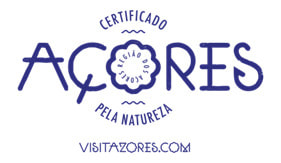
By Rafael Fraga | Updated Jan' 2022
We collected information and feedback from many travelers to learn which things went wrong on their Azores trips.
Then, we selected the most important issues regarding trip planning, added some essential Azores facts, tips and useful links.
So, if you're planning to visit the Azores in 2022, you'll love this guide.
Let's dive right in!
Then, we selected the most important issues regarding trip planning, added some essential Azores facts, tips and useful links.
So, if you're planning to visit the Azores in 2022, you'll love this guide.
Let's dive right in!
CONTENTS
1. Passport and Visa requirements for the Azores
2. Health and travel insurance
3. How to reach the Azores
4. Which islands to visit, for how long, and where to stay
5. Getting around
6. Currency and costs
7. Weather, what to wear
8. Connectivity
9. Eateries, what to eat and drink
10. When to visit, bookings and reservations
2. Health and travel insurance
3. How to reach the Azores
4. Which islands to visit, for how long, and where to stay
5. Getting around
6. Currency and costs
7. Weather, what to wear
8. Connectivity
9. Eateries, what to eat and drink
10. When to visit, bookings and reservations
1. Passport and Visa requirements for the Azores
As part of Portuguese territory, the Azores have Schengen visa requirements:
EU Nationals: no visa required
Canada, New Zealand, the USA and (by temporary agreement) Australia: can stay for up to 90 days without a visa.
Others, including nationals of South Africa, need a visa (exceptions may apply).
EU Nationals: no visa required
Canada, New Zealand, the USA and (by temporary agreement) Australia: can stay for up to 90 days without a visa.
Others, including nationals of South Africa, need a visa (exceptions may apply).
2. Health and travel insurance
Please check the governmental site www.visitazores.com for updated information on Covid-19 procedures.
Access to public healthcare will vary according to your nationality, age, circumstances, etc. Please contact your insurance company to guarantee coverage. Some vaccines are mandatory in Portugal.
São Miguel, Terceira and Faial islands have hospitals. The remaining islands have smaller health centers, with general practicioners only. All islands have pharmacies, but some villages/places are remote.
Tip: bring any prescription medicine with you to cover the duration of your trip, and pack the main non-prescription medicines (aspirin, etc.).
Access to public healthcare will vary according to your nationality, age, circumstances, etc. Please contact your insurance company to guarantee coverage. Some vaccines are mandatory in Portugal.
São Miguel, Terceira and Faial islands have hospitals. The remaining islands have smaller health centers, with general practicioners only. All islands have pharmacies, but some villages/places are remote.
Tip: bring any prescription medicine with you to cover the duration of your trip, and pack the main non-prescription medicines (aspirin, etc.).
3. Trip planning
The Azores are roughly 1.600 Km (1.000 miles) West from mainland Portugal, and can be reached by air or sea (cruises only).
Most international visitors enter the islands through Ponta Delgada city, in São Miguel island (airport code: PDL), or Angra do Heroísmo, in Terceira Island (airport code: TER). Horta (HOR) and Pico (PIX) airports also connect to mainland Portugal.
Make sure you know to which island(s) you’re going, including cities, airports or harbors included in your itinerary.
Most international visitors enter the islands through Ponta Delgada city, in São Miguel island (airport code: PDL), or Angra do Heroísmo, in Terceira Island (airport code: TER). Horta (HOR) and Pico (PIX) airports also connect to mainland Portugal.
Make sure you know to which island(s) you’re going, including cities, airports or harbors included in your itinerary.
4. Which islands to visit and for how long
The 9 Azores islands are quite different from each other: while São Miguel island offers the largest range of services, accommodations, and things to do, Corvo, for instance, resumes to a small street with about 400 inhabitants!
Nevertheless, each island has its unique points of interest: there’s beach, mountain, ocean, culture, etc. Some of the smaller islands lack facilities - such as restaurants, shops or general hospitals.
Some typical travel itineraries include:
5-7 days in São Miguel (most travellers kickstart the Azores with this option)
4-6 days on Faial, Pico and São Jorge (known to locals as "the triangle")
2-4 days in Terceira
3-5 days in Flores and Corvo (these are the most remote islands)
2-3 days in Santa Maria (lookout for the Maré de Agosto Festival)
2-3 days in Graciosa (do not miss the Furna do Enxofre)
São Miguel and Terceira islands have an extensive range of accommodations in both urban and countryside locations (4-5 star hotels, SPA’s, family-owned lodgings, etc.).
Make sure to carefully investigate what each island offers/lacks, and plan accordingly.
Nevertheless, each island has its unique points of interest: there’s beach, mountain, ocean, culture, etc. Some of the smaller islands lack facilities - such as restaurants, shops or general hospitals.
Some typical travel itineraries include:
5-7 days in São Miguel (most travellers kickstart the Azores with this option)
4-6 days on Faial, Pico and São Jorge (known to locals as "the triangle")
2-4 days in Terceira
3-5 days in Flores and Corvo (these are the most remote islands)
2-3 days in Santa Maria (lookout for the Maré de Agosto Festival)
2-3 days in Graciosa (do not miss the Furna do Enxofre)
São Miguel and Terceira islands have an extensive range of accommodations in both urban and countryside locations (4-5 star hotels, SPA’s, family-owned lodgings, etc.).
Make sure to carefully investigate what each island offers/lacks, and plan accordingly.
5. Getting around
The Azores are safe and peaceful, adequate for both solo and group travellers.
All islands are inter-connected by smaller propeller airplanes, operated by Sata Air Azores, and flights take from 10 minutes to 1.5h, costing about €90 per itinerary, per person.
Faial, Pico and São Jorge islands are connected daily by all-year-round ferries.
From May to October, there are additional ferries that extend the network to all islands; trips take from 4h to 12+ hours, and the costs vary.
In general, the public land transportation network is poor. Therefore, a rental car or scooter is the best way to move around. Since the roads are often sinuous and narrow, you might opt for booking some tours with local companies. Biking is possible, but somewhat dangerous.
Cities have inexpensive taxi services at fixed rates per itinerary, and most islands have public buses that connect the villages to the urban areas on weekdays. Exceptionally, there will be urban bus lines (such as in Ponta Delgada city).
The main idea: plan carefully how you will reach your lodging and explore the island from there.
All islands are inter-connected by smaller propeller airplanes, operated by Sata Air Azores, and flights take from 10 minutes to 1.5h, costing about €90 per itinerary, per person.
Faial, Pico and São Jorge islands are connected daily by all-year-round ferries.
From May to October, there are additional ferries that extend the network to all islands; trips take from 4h to 12+ hours, and the costs vary.
In general, the public land transportation network is poor. Therefore, a rental car or scooter is the best way to move around. Since the roads are often sinuous and narrow, you might opt for booking some tours with local companies. Biking is possible, but somewhat dangerous.
Cities have inexpensive taxi services at fixed rates per itinerary, and most islands have public buses that connect the villages to the urban areas on weekdays. Exceptionally, there will be urban bus lines (such as in Ponta Delgada city).
The main idea: plan carefully how you will reach your lodging and explore the island from there.
6. Currency and costs
The currency in Portugal/Azores is the Euro (€).
Most urban businesses and shops accept card payments, but many smaller establishments outside the urban areas accept cash only. It’s wise to always have some cash - ATM’s are abundant and easy to find. Debit cards are widely used.
The Azores are generally inexpensive, but European standards. An average 3-course meal at a restaurant will cost around €16 per person, drinks included.
Tip: Make sure to let your bank and credit card providers know where you’ll be, to prevent them from freezing your card as a fraud-precaution measure.
Most urban businesses and shops accept card payments, but many smaller establishments outside the urban areas accept cash only. It’s wise to always have some cash - ATM’s are abundant and easy to find. Debit cards are widely used.
The Azores are generally inexpensive, but European standards. An average 3-course meal at a restaurant will cost around €16 per person, drinks included.
Tip: Make sure to let your bank and credit card providers know where you’ll be, to prevent them from freezing your card as a fraud-precaution measure.
7. Weather, what to wear
The Azores have a sub-tropical, temperate climate, with Winter-Summer temperatures ranging from 12ºC to 26°C (54ºF to 77°F), respectively. Weather is somewhat unstable and extremely humid.
All-year mandatories include: breathable clothes, rain gear, swimming gear, good walking shoes and sun glasses. The rest will depend on your trip plans: for example, if you’re climbing mount Pico in Winter, make sure to bring snow clothes.
Going out: locals wear casual clothing, and there’s rarely any specific protocol or outfit etiquette at restaurants.
Flores and Corvo islands (the Western-most ones) are often hit by strong winds and cloudy weather, making them unreachable by air or sea, and the same happens occasionally for Faial or Pico. Keep track of weather reports to avoid losing your flight connections.
All-year mandatories include: breathable clothes, rain gear, swimming gear, good walking shoes and sun glasses. The rest will depend on your trip plans: for example, if you’re climbing mount Pico in Winter, make sure to bring snow clothes.
Going out: locals wear casual clothing, and there’s rarely any specific protocol or outfit etiquette at restaurants.
Flores and Corvo islands (the Western-most ones) are often hit by strong winds and cloudy weather, making them unreachable by air or sea, and the same happens occasionally for Faial or Pico. Keep track of weather reports to avoid losing your flight connections.
8. Connectivity
The Azores have usually good mobile connections with fast internet, but certain remote locations might be outdated or offer poor network. While many businesses offer free Wifi, you might consider to acquire a prepaid phone card with internet included. Local providers are Vodafone, MEO and NOS.
European outlets are different and voltage is 220V. Make sure to bring compatible devices or converters to protect your devices.
Country code is +351 (00351), and Portuguese phone numbers are all 9-digit long.
European outlets are different and voltage is 220V. Make sure to bring compatible devices or converters to protect your devices.
Country code is +351 (00351), and Portuguese phone numbers are all 9-digit long.
9. Eateries, what to eat and drink
Food
Azorean food is a unique blend of Mediterranean and Atlantic foods, tropical fruits and Asian spices. Meat, fish and dairy eaters will have plenty to choose from: top-quality Azorean beef, pork, fresh fish and seafood, complemented by a rich assortment of vegetables, fruit and 40+ unique varieties of cheese!
Even though many restaurants can accommodate specific dietary restrictions (such as lactose of gluten allergies), vegetarians and vegans might experience difficulty in finding extensive menus - salads and strictly vegetable-based meals are generally poor and repetitive. On smaller islands (this means: all except São Miguel and Terceira) it will be harder to find veggie alternatives, and only larger supermarkets sell food for people following specific diets.
Wine
The Azores have a rich history of wine-making, definitely worth discovering: volcanic whites, reds, and aged wines, along with many traditional spirits and liqueurs. Local production of artisanal beers, gin and rum has also taken-off recently. The islands also have several brands of mineral water (both naturally sparkling or still) and traditional soda / pop. Tap water is drinkable, unless otherwise noted.
Tea & Coffee
São Miguel island produces tea, housing the oldest historical plantations in Europe, while São Jorge island has a 40-year-old tradition of planting and roasting coffee beans, available locally.
Eateries
Most restaurants are located in urban areas, and kitchens close around 9.30 PM. If you are visiting the smaller islands, make sure to carefully plan your meals, especially if you are arriving later than 9 PM. Contact your local guides or hosts for assistance.
Azorean food is a unique blend of Mediterranean and Atlantic foods, tropical fruits and Asian spices. Meat, fish and dairy eaters will have plenty to choose from: top-quality Azorean beef, pork, fresh fish and seafood, complemented by a rich assortment of vegetables, fruit and 40+ unique varieties of cheese!
Even though many restaurants can accommodate specific dietary restrictions (such as lactose of gluten allergies), vegetarians and vegans might experience difficulty in finding extensive menus - salads and strictly vegetable-based meals are generally poor and repetitive. On smaller islands (this means: all except São Miguel and Terceira) it will be harder to find veggie alternatives, and only larger supermarkets sell food for people following specific diets.
Wine
The Azores have a rich history of wine-making, definitely worth discovering: volcanic whites, reds, and aged wines, along with many traditional spirits and liqueurs. Local production of artisanal beers, gin and rum has also taken-off recently. The islands also have several brands of mineral water (both naturally sparkling or still) and traditional soda / pop. Tap water is drinkable, unless otherwise noted.
Tea & Coffee
São Miguel island produces tea, housing the oldest historical plantations in Europe, while São Jorge island has a 40-year-old tradition of planting and roasting coffee beans, available locally.
Eateries
Most restaurants are located in urban areas, and kitchens close around 9.30 PM. If you are visiting the smaller islands, make sure to carefully plan your meals, especially if you are arriving later than 9 PM. Contact your local guides or hosts for assistance.
10. When to visit, bookings and reservations
Most visitors choose the Spring - Summer to visit the Azores. Nevertheless, due to the mild temperatures, cheaper prices and exuberant nature, many people are choosing the Winter.
Even though the Azores are not a mass-tourism destination, July-August gets very busy, namely in São Miguel island. It’s advisable to plan your trip carefully and make your bookings and reservations in advance.
Even though the Azores are not a mass-tourism destination, July-August gets very busy, namely in São Miguel island. It’s advisable to plan your trip carefully and make your bookings and reservations in advance.




